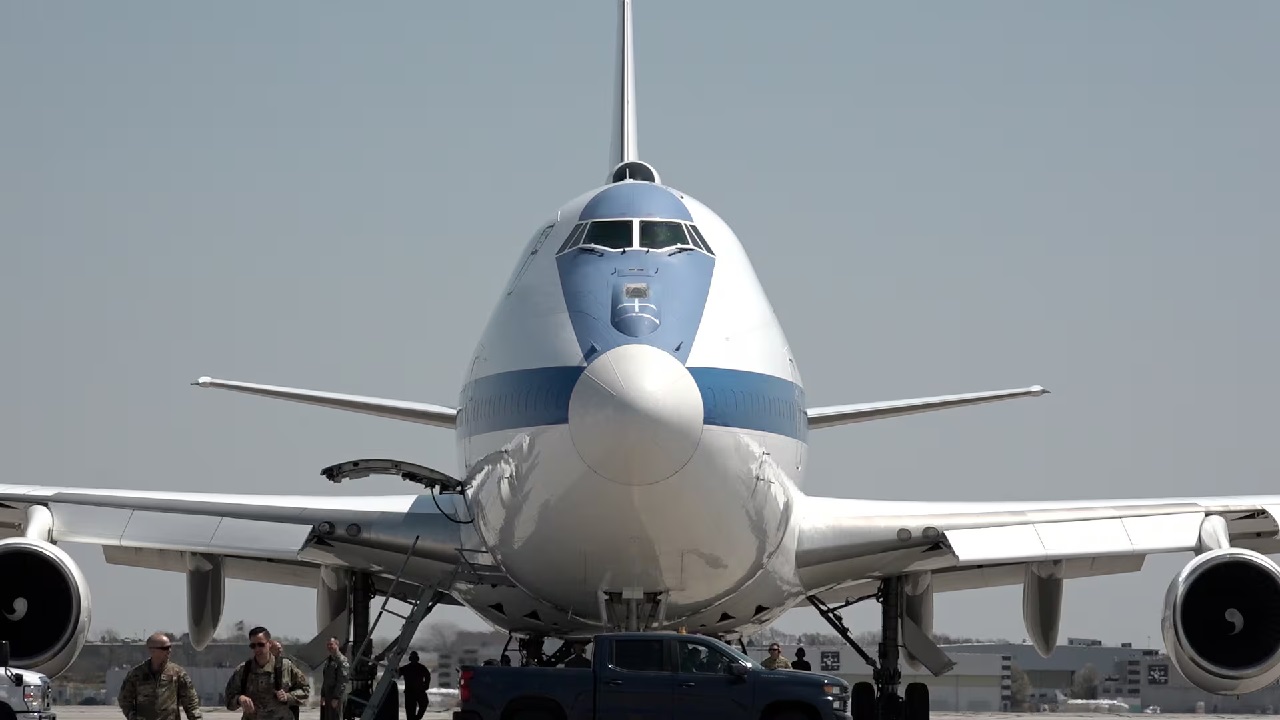Tensions Soar: Doomsday Plane in the Sky
In a striking signal of rising geopolitical stakes, the United States’ Boeing E-4B ‘Doomsday Plane’ was spotted flying to Joint Base Andrews in Washington, DC, late Tuesday night. The move comes as tensions between Iran and Israel reach alarming levels, with both countries exchanging missile strikes and threatening broader escalation. The sudden activity of the E-4B has triggered speculation about U.S. preparations for potential large-scale conflict.
Understanding the Doomsday Plane: Technology Born for Crisis
The E-4B Nightwatch, known informally as the “Doomsday Plane,” is no ordinary aircraft. Designed during the Cold War, it serves as the National Airborne Operations Center (NAOC), capable of maintaining command and control of U.S. nuclear forces in the event of catastrophic ground-based attacks. Unlike the ceremonial Air Force One, this aircraft functions as a mobile war room, enabling the U.S. President, Defense Secretary, and senior military leaders to coordinate strategic responses while airborne.
Equipped with advanced communications technology, EMP (electromagnetic pulse) resistance, and analog navigation systems less susceptible to cyberattacks, the E-4B is built for survival and control during high-stakes warfare. With capacity for 112 personnel, three operational levels, and in-air refueling capabilities, it can remain airborne for days. The longest recorded flight stands at 35.4 hours. Its interior includes command zones, rest areas, briefing rooms, and living quarters, transforming the plane into a literal “Flying Pentagon.”
Speculation Rises: Flight Path and Callsign Stir Debate
On Tuesday, the E-4B departed from Bossier City, Louisiana at 5:56 p.m. ET and landed at Joint Base Andrews at 10:01 p.m. after circling parts of the East Coast. This specific flight used the callsign ORDER01—a deviation from its usual identifier ORDER6—fueling speculation of a classified mission. While the Pentagon offered no official comment, experts suggest the flight was either a high-level readiness drill or a direct response to developments in the Middle East.
Ground Realities: Missiles, Warnings, and War Talk
The plane’s movement coincides with worsening hostilities between Israel and Iran. On Thursday, an Iranian missile hit Israel’s Soroka Medical Center in Beersheba, damaging facilities and wounding at least 40 people. Other strikes targeted high-rises and residential buildings near Tel Aviv, igniting widespread concern.
In response, Israeli Defense Minister Israel Katz made his most aggressive statement yet, declaring that Iran’s Supreme Leader Ayatollah Ali Khamenei “cannot continue to exist.” The statement signals Israel’s hardening stance as it continues to strike Iranian military targets and nuclear infrastructure in what it calls pre-emptive defense.
Meanwhile, the U.S. has maintained a cautious stance, with President Donald Trump indicating he would decide within two weeks whether to join Israeli efforts militarily. However, the deployment of the Doomsday Plane may hint at contingency planning already underway.
A Symbol of Escalation and Deterrence
The sighting of the E-4B ‘Doomsday Plane’ is no minor development. In military and diplomatic circles, its movement is typically viewed as a signal: a reminder of America’s readiness and technological superiority in moments of global crisis. While it does not confirm immediate U.S. involvement, it certainly indicates that Washington is preparing for worst-case scenarios.
As diplomacy teeters and war rhetoric intensifies, this airborne command center serves as both a deterrent and a declaration. The world watches as the Middle East crisis deepens—and the skies above the U.S. offer a chilling glimpse of just how seriously American defense authorities are taking the unfolding conflict.
(With agency inputs)








